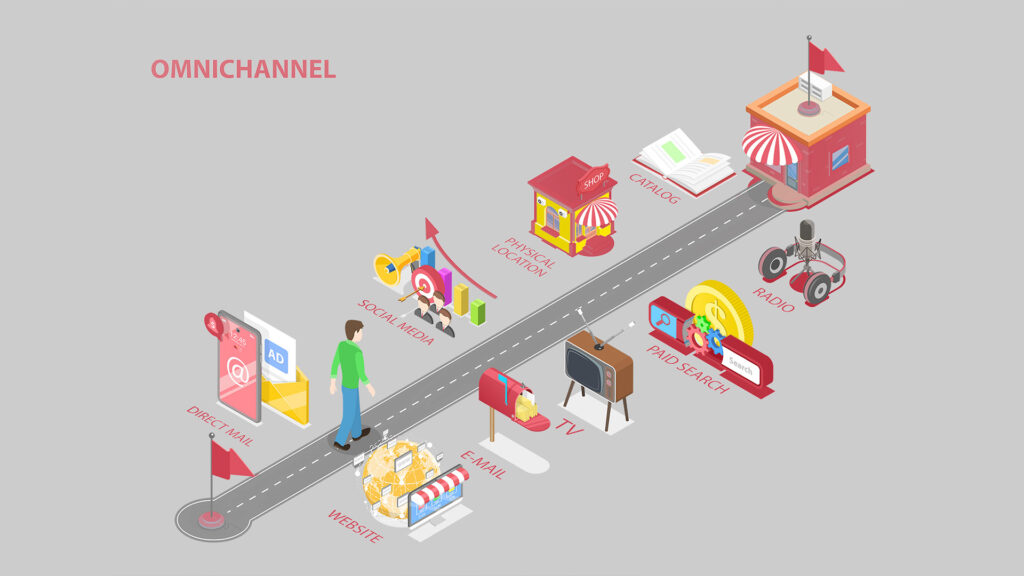Desktops, tablets, and smartphones, oh my…
In our fast-paced digital landscape, customers are interacting with brands across multiple channels, creating a need for seamless customer experiences across various devices and touchpoints to drive engagement and loyalty. In fact, businesses with strong omnichannel customer engagement strategies retain on average 89% of their customers, compared to just 33% for those without.
And if you’re thinking omnichannel marketing only applies to B2C retailers, think again, with 67 percent of B2B buyers saying they start their purchasing journey online.
In a nutshell, omnichannel marketing aims to provide a seamless experience across all channels. Customers should be able to transition effortlessly between devices and platforms while maintaining context. To do this, your brand design and messaging should remain consistent, allowing customers to pick up where they left off and continue their journey regardless of where they are or what they’re doing.
Following are six best practices for creating an omnichannel marketing strategy that presents a unified and consistent customer experience:
- Leverage data analytics. Gather data and insights on audience preferences and behaviors to guide channel selection and content creation, ensuring your marketing efforts resonate. By leveraging data analytics, you can identify patterns, track behaviors, and measure program effectiveness to optimize future marketing efforts.
- Personalize content. Utilize collected customer data to deliver messaging and experiences tailored to individual interests and preferences across your channels. You can also use this data to implement recommendation engines to suggest relevant products or content based on previous interactions. By personalizing your communications, you enhance customer engagement and build stronger connections. A remarkable 97% of marketers say they saw a rise in business outcomes due to personalization efforts.
- Optimize for mobile. With the increasing use of smartphones and smartwatches, such optimization is critical. Ensure that your website, emails, and other touchpoints are mobile-friendly by optimizing load times, simplifying navigation, and creating mobile-only experiences such as exclusive offers.
- Integrate with social. Like mobile, social platforms are integral to an omnichannel marketing strategy. Use these platforms to engage with prospects, build brand awareness, and drive traffic to your website. Also, use social listening tools to monitor conversations, gather insights, and respond promptly to customer feedback.
- Stay consistent. Remember that your voice, values, and visual identity should remain cohesive across all platforms. Create brand guidelines that outline your messaging, tone, and visual elements, ensuring that all communication align with your brand identity.
- Offer seamless customer support. This allows customers to reach out through their preferred method. From a digital perspective, implement options such as live chat and chatbots to provide timely assistance, but also enable escalation to a real person as needed. Such agents should have access to the customer’s digital interaction history to maximize efficiency.
Omnichannel marketing is a powerful strategy that enables businesses to deliver consistent and personalized experiences to customers across multiple channels. Simplified, it’s about delivering the right message through the right channel at the right time to provide a cohesive and personalized buying journey.
If you need help creating and implementing any aspect of your omnichannel marketing strategy, contact us today.

